In 2017, Andrew Jackson told us about the visual effects work on Dunkirk. He then worked on The King and reunited with Christopher Nolan for Tenet. He explains to us today his work on their new collaboration for Oppenheimer.
Before joining DNEG in 2016, Giacomo Mineo worked in numerous studios such as Proxima Milano, EDI effetti digitali italiani and MPC. He has worked on many projects such as Terminator Genisys, Pirates of the Caribbean: Dead Men Tell No Tales, Avengers: Infinity War and The Wheel of Time.
What is your background?
Giacomo Mineo (GM): I studied art in Italy before embarking on my career in the industry working on commercials. For eleven years, I worked as a smoke and flame artist in Milan. I decided to make the move to the UK to work on movies, where I have spent the last thirteen years working at both MPC and DNEG. Over the years, I progressed from the compositing department to the role of VFX Supervisor. This journey has provided me with amazing opportunities to work on numerous big blockbuster movies, collaborating with a multitude of exceptionally talented artists.
How did you get involved in this film?
GM: Right from the start, it was evident that this project mainly revolved around 2D work, requiring a supervisor with extensive compositing experience. DNEG recommended me for the show, and I quickly became deeply involved in the project. I started collaborating with Andrew Jackson, who was already heavily engaged in the production, and together we conducted early tests and laid the groundwork for the show.
How did it feel to be entering the Christopher Nolan universe?
GM: It has been an incredibly challenging yet unique experience. Working with Christopher Nolan has exposed me to a completely different approach to VFX compared to any other director I’ve collaborated with. He consistently pushes the boundaries, insisting on achieving all VFX using real events captured in-camera. This practical approach required us to be exceptionally imaginative with the material at hand. We engaged in extensive lookdev work and had to think outside the box, often coming up with unconventional yet highly effective ideas to meet his vision.
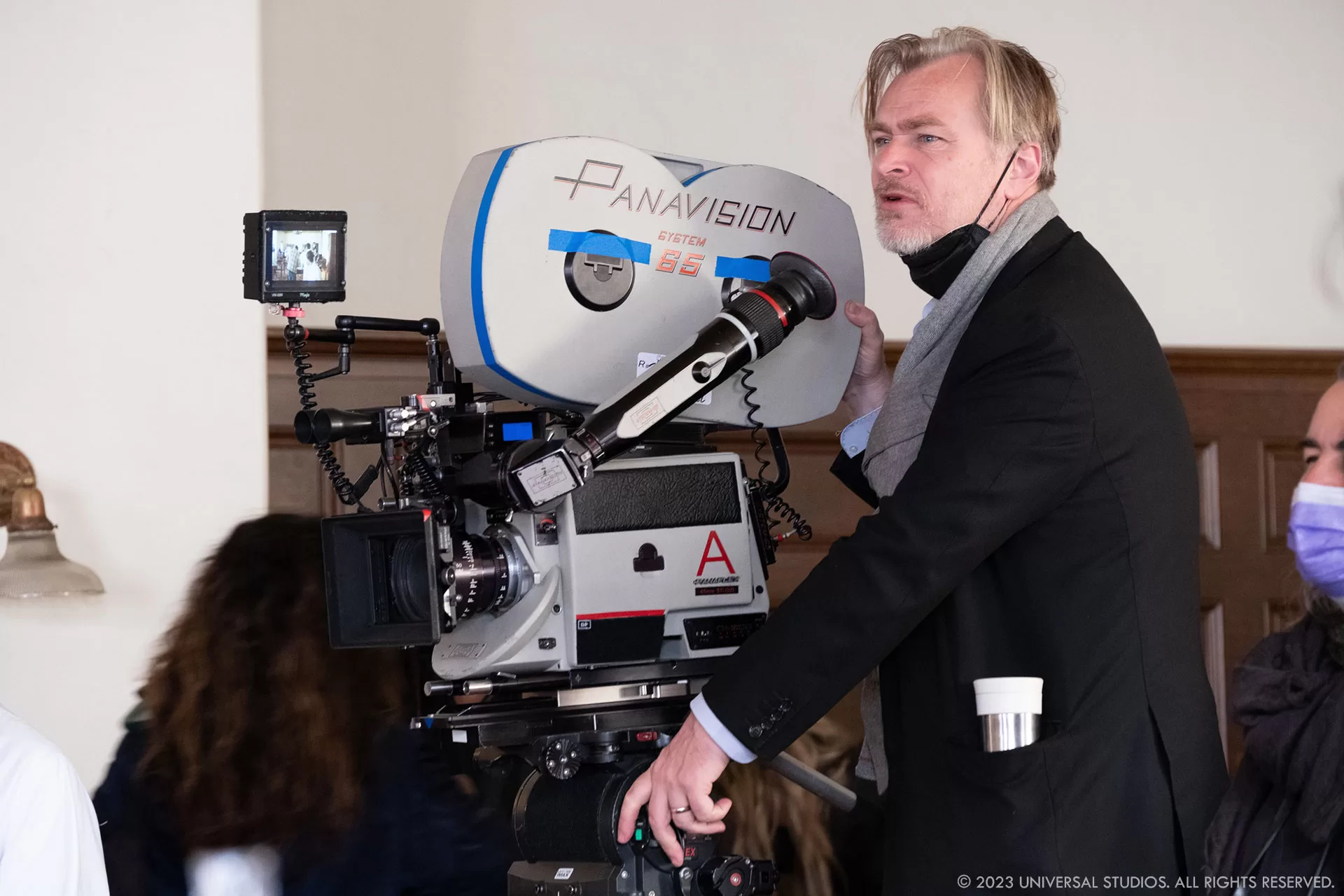
How was this new collaboration with the Director Christopher Nolan?
Andrew Jackson (AJ): This is my third film with Chris, and during that time I have developed a strong understanding of his filmmaking philosophy. His approach to effects is very similar to mine in that we don’t see a clear divide between VFX and SFX, and believe that if something can be filmed it will always bring more richness and depth to the work. I feel he has a level of trust in my approach to the work, and I really appreciate the freedom he gives me to experiment with ideas and the collaborative approach we take as we refine solutions for the individual shots.
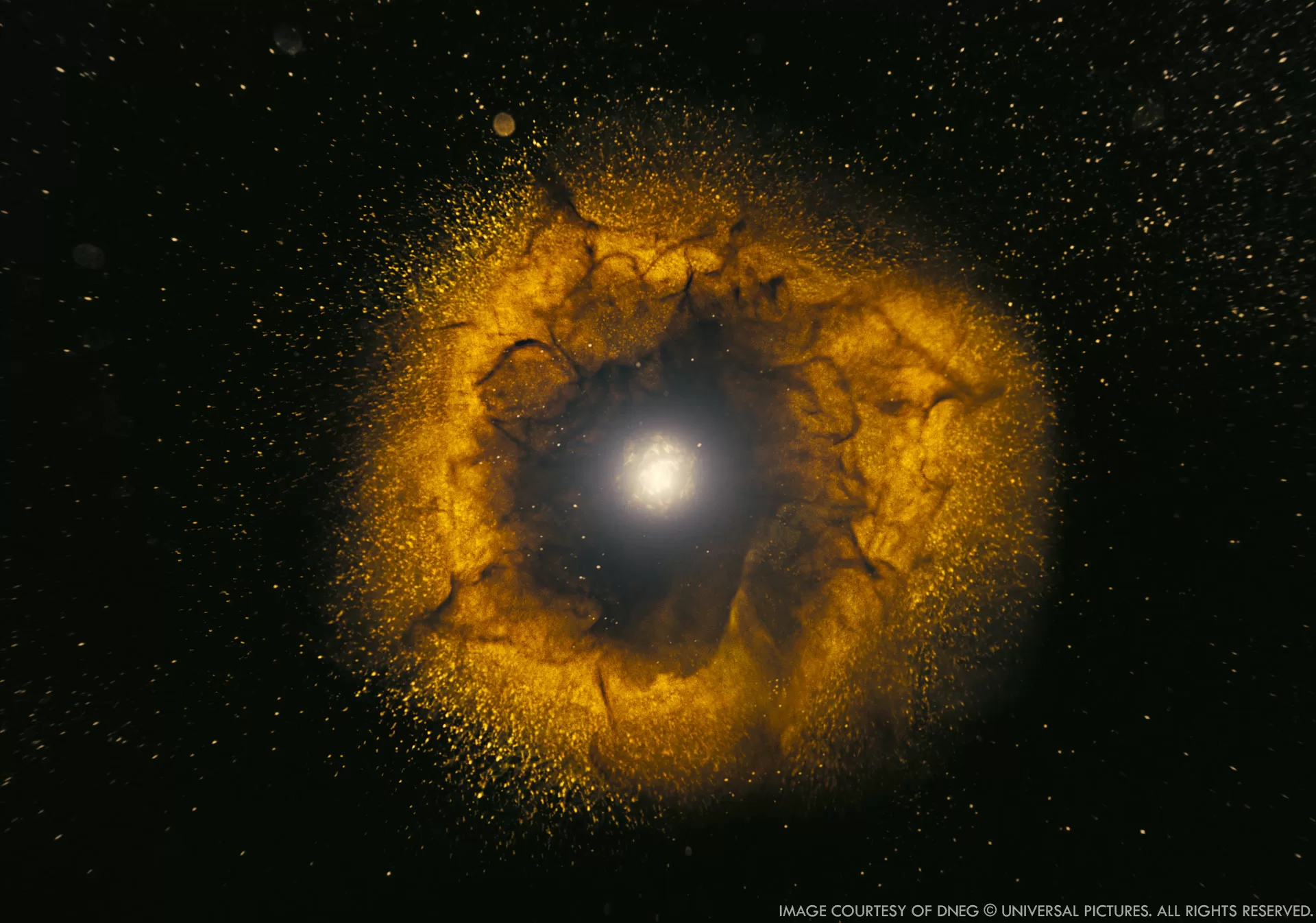
What were his expectations about the visual effects?
GM: The script primarily outlined concepts and notions, rather than providing precise visual descriptions. Apart from the Trinity test, we didn’t have any references because during Oppenheimer’s era no-one knew what a black hole looked like, or had seen a view of earth from space, not to mention atoms and particles. The task at hand was to discover solutions that could be constructed and filmed, aligning with the story’s concepts while also being visually captivating. Our objective was for every on-screen image to be derived from authentic photography, captured on film, preferably in IMAX format. Ultimately, shots ranged from utilising the unaltered original elements as captured, to complex compositing involving multiple filmed components.
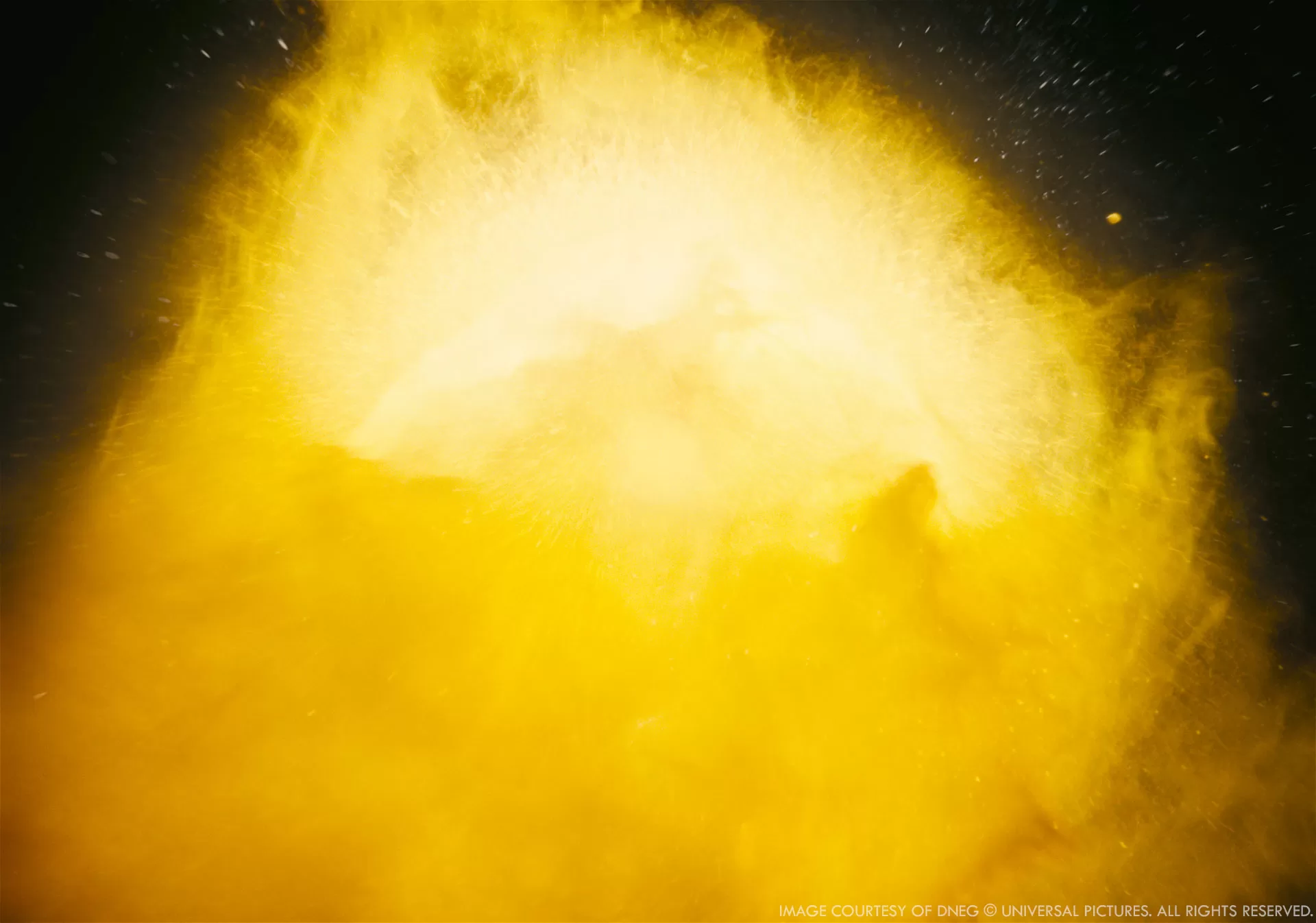
How did you split the work between you and amongst the DNEG offices?
GM: The collaboration between the DNEG team and Andrew Jackson was integral throughout the production. We were fortunate to have Andrew present in the DNEG studio for a significant portion of the project’s duration, offering guidance and facilitating our comprehension of the unique approach and methodology required for a Christopher Nolan film.
Can you elaborate about the filming and creation of the subatomic world of electrons, protons, and neutrons?
AJ: I spent the first three months of the project in Scott Fisher’s workshop, working with him and his SFX crew to develop the various simulations and effects. We wanted all of the images on screen to be generated from real photography, shot on film, and preferably IMAX. The process involved shooting an extensive library of elements. The final shots ranged from using the raw elements as shot, though to complex composites of multiple filmed elements.
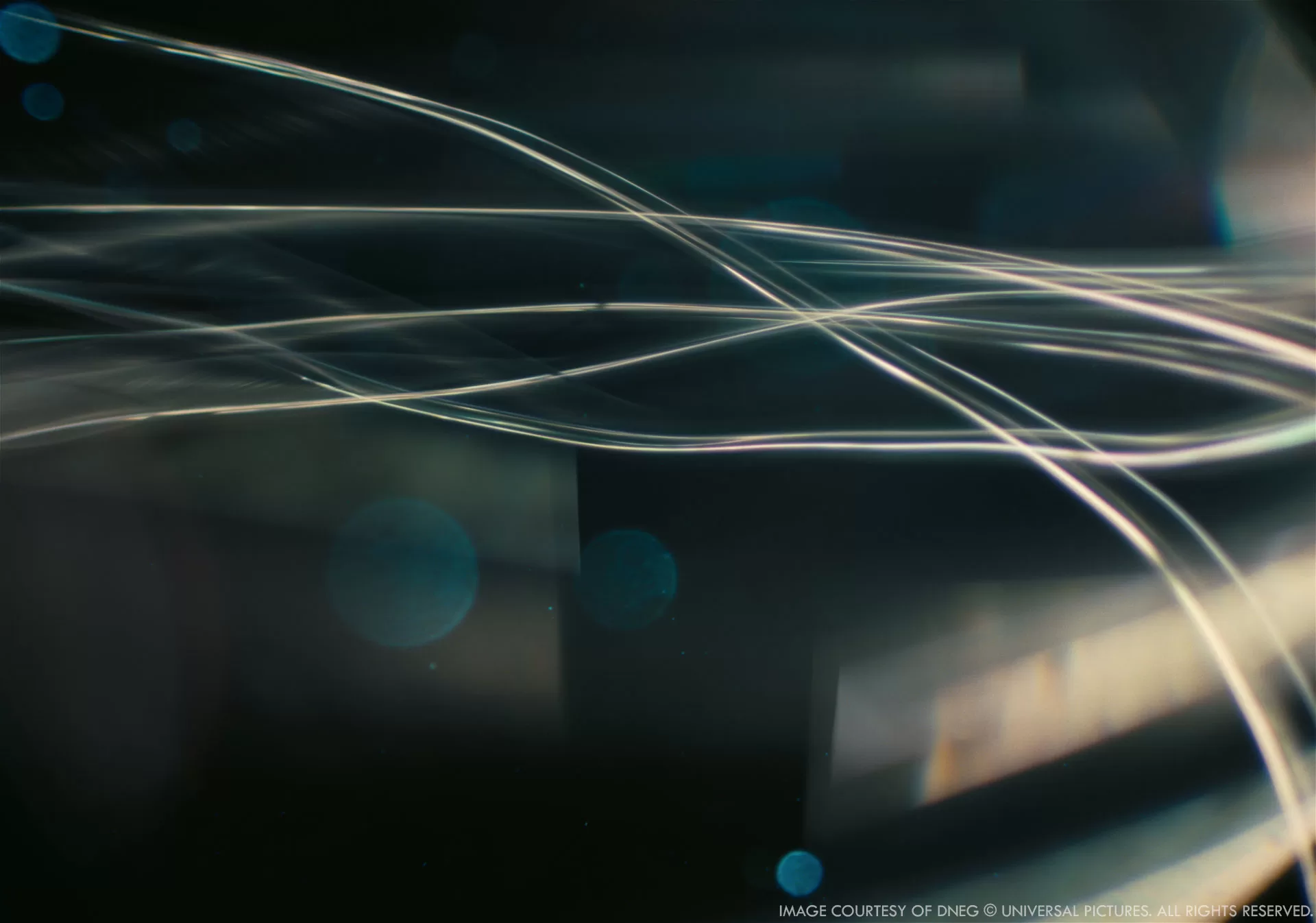
What kind of references and influences did you receive for these kinds of shots?
AJ: I did look at material that relates to the subatomic world, but there really wasn’t much available apart from infographics. Since the images we were creating were illustrating Oppenheimer’s inner thoughts and imaginings, it was more a case of developing our own ideas that related to the world of quantum mechanics.
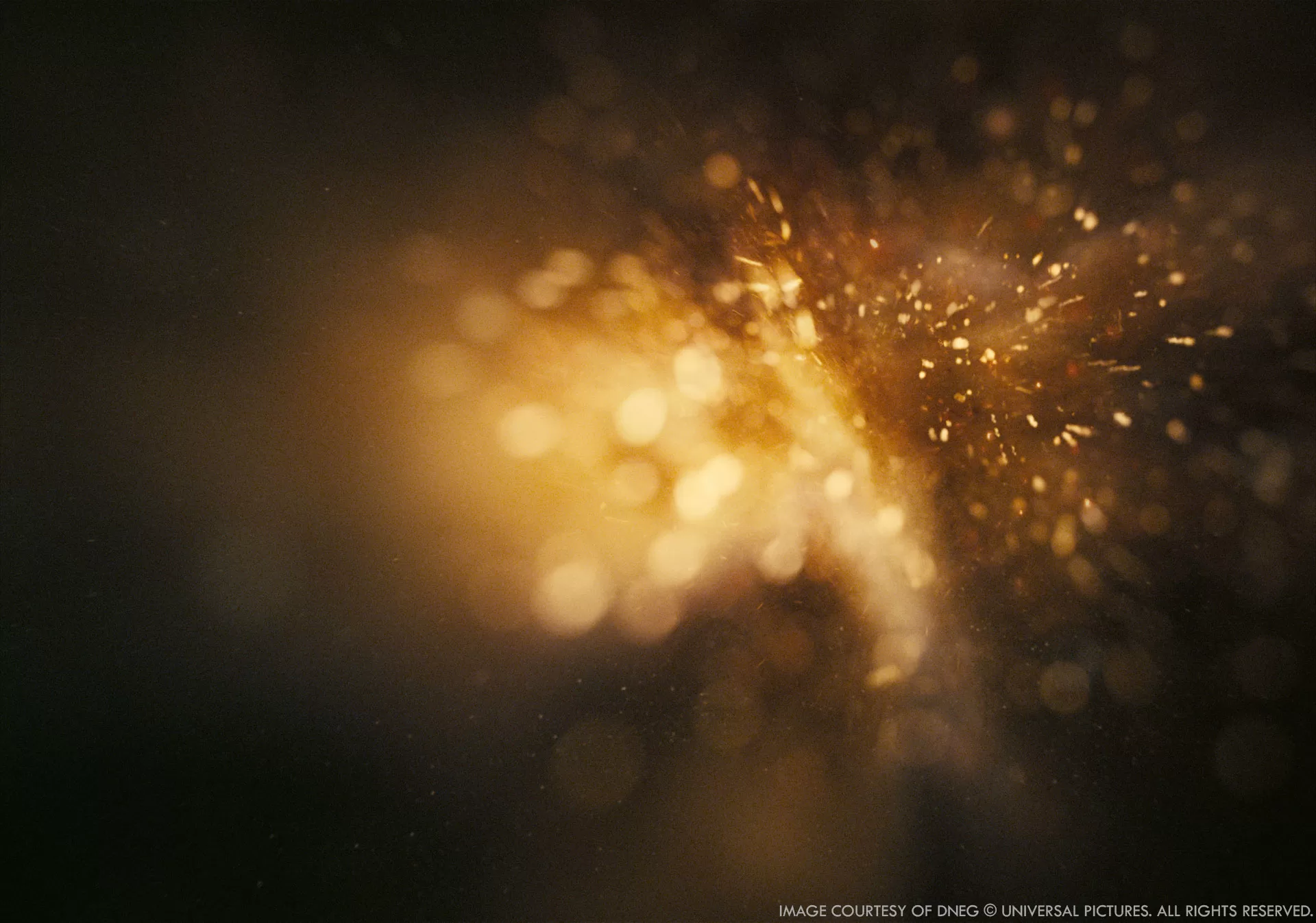
What were the main challenges with shooting and compositing these elements?
GM: Utilising only a specific set of elements posed a significant challenge for the compositing team. The difficulty lay in visualising the vast possibilities offered by this incredibly diverse library of elements. With over 400 different tests and experiments at our disposal, we needed time to explore how to extrapolate, for instance, a solar flare using an underwater ink element. Ultimately, the combination of skilled artists and the collaborative time spent together in the studio played a pivotal role in achieving the required level of quality for this project.
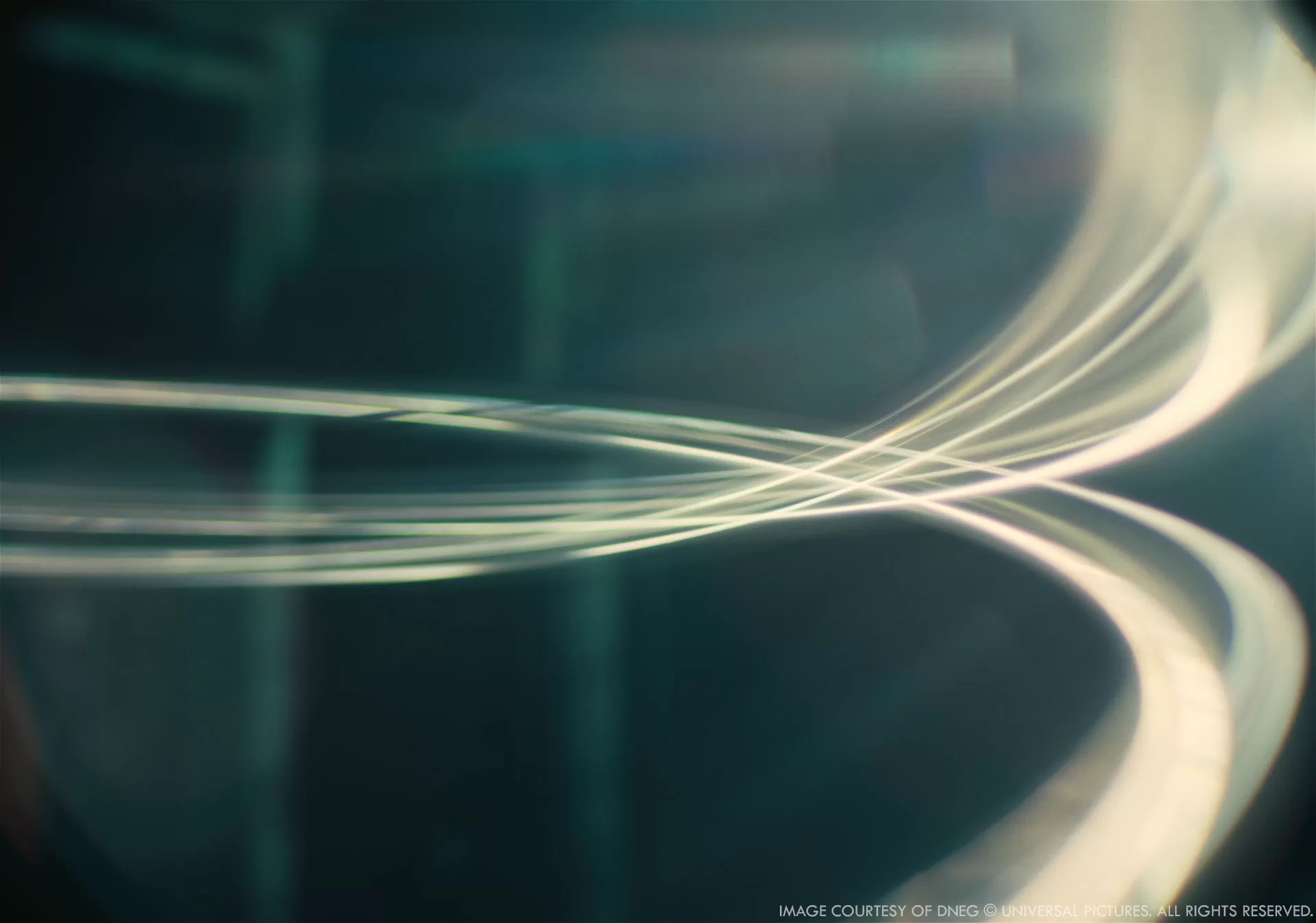
Can you elaborate about your work on the Trinity test?
GM: The Trinity test was arguably the most complex task of the show, demanding great attention to detail in terms of compositing. Our goal was to reconstruct that specific event using solely practically shot elements. This encompassed a range of different material, from massive explosions made in collaboration with SFX Supervisor, Scott Fisher, to relatively small and macro elements shot at the highest frame range IMAX allows. Examples include shockwaves of dust and underwater explosions, to name just a couple.
It’s worth highlighting that Christopher Nolan was fully aware of the constraints associated with relying solely on practical elements. In fact, the goal was always to capture the essence of the event rather than meticulously reproducing the original occurrence.
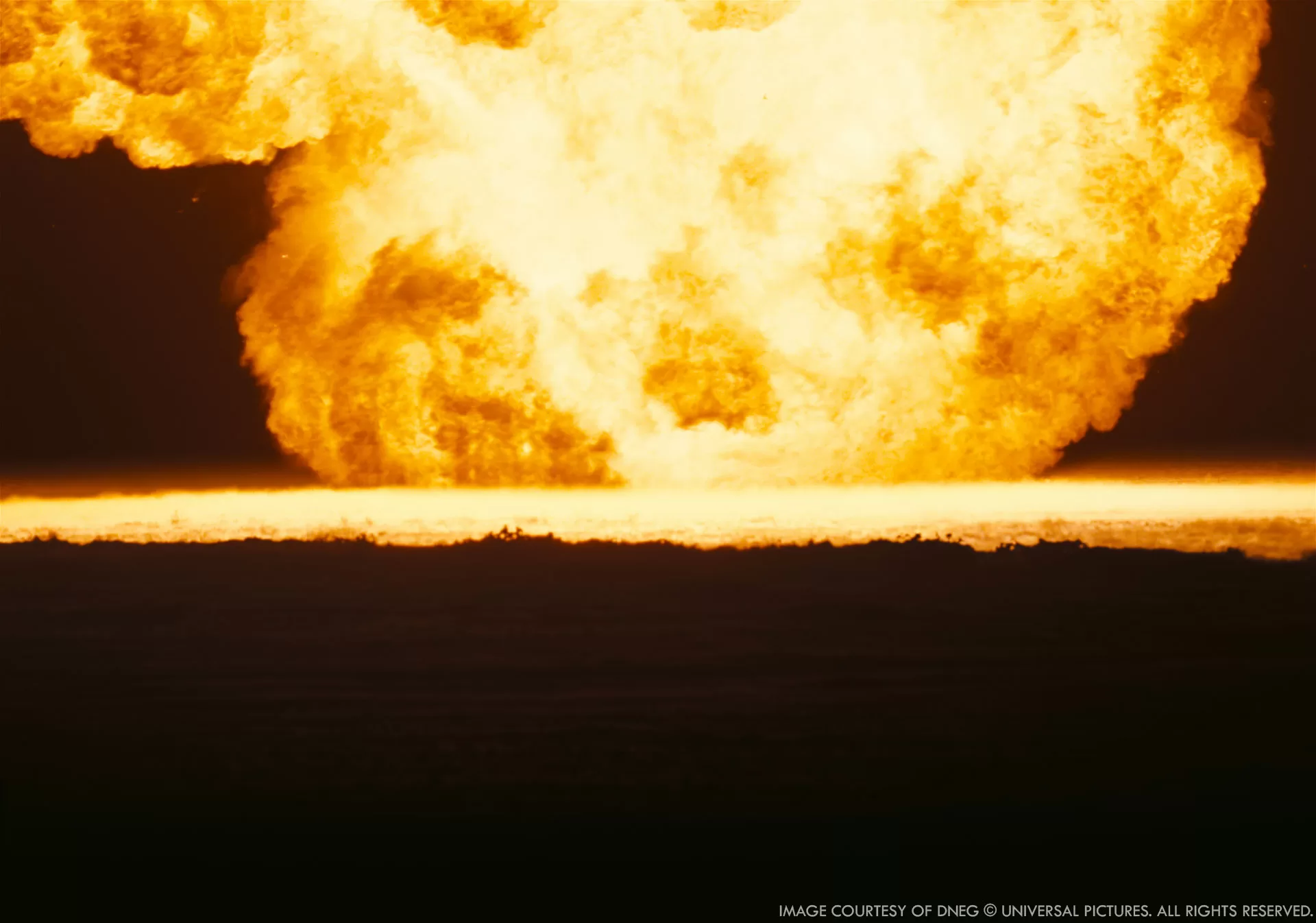
How did you recreate the impressive nuclear explosion?
GM: In the movie the explosion is visible from several different points of view. The result is a combination of a few practical large-scale explosions retimed and augmented to a complex compositing of different close up elements – some massive but also some miniatures, like the ‘plasma explosion’ shot, beautifully designed by Jay Murray.
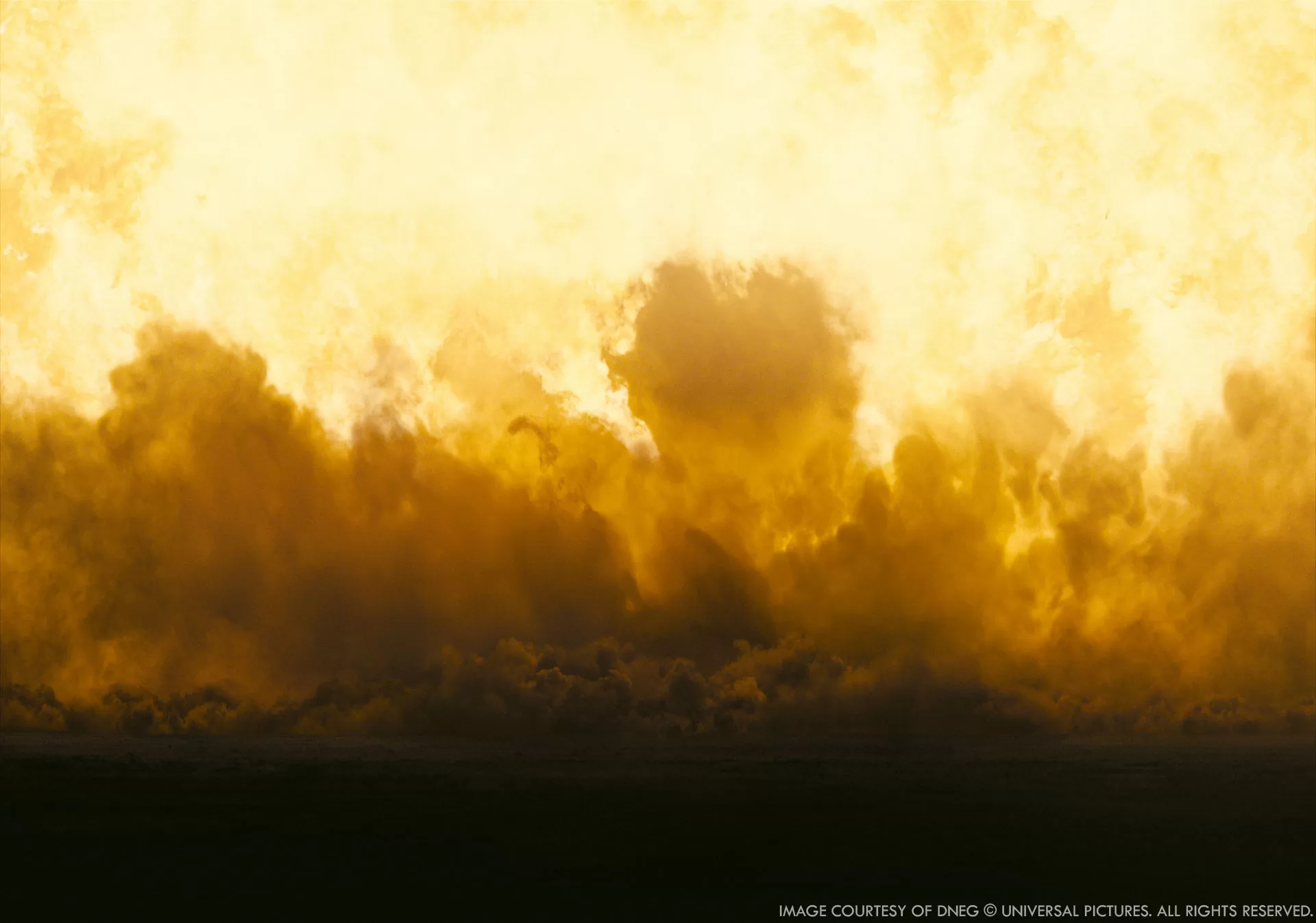
Can you tell us more about the set extension work?
GM: As carefully planned, the film needed minimal extension work. For example, Los Alamos had been re-built almost entirely on set. Our focus primarily involved minor clean-up, like in the aerial shots and retouching work for specific undesired modernity.
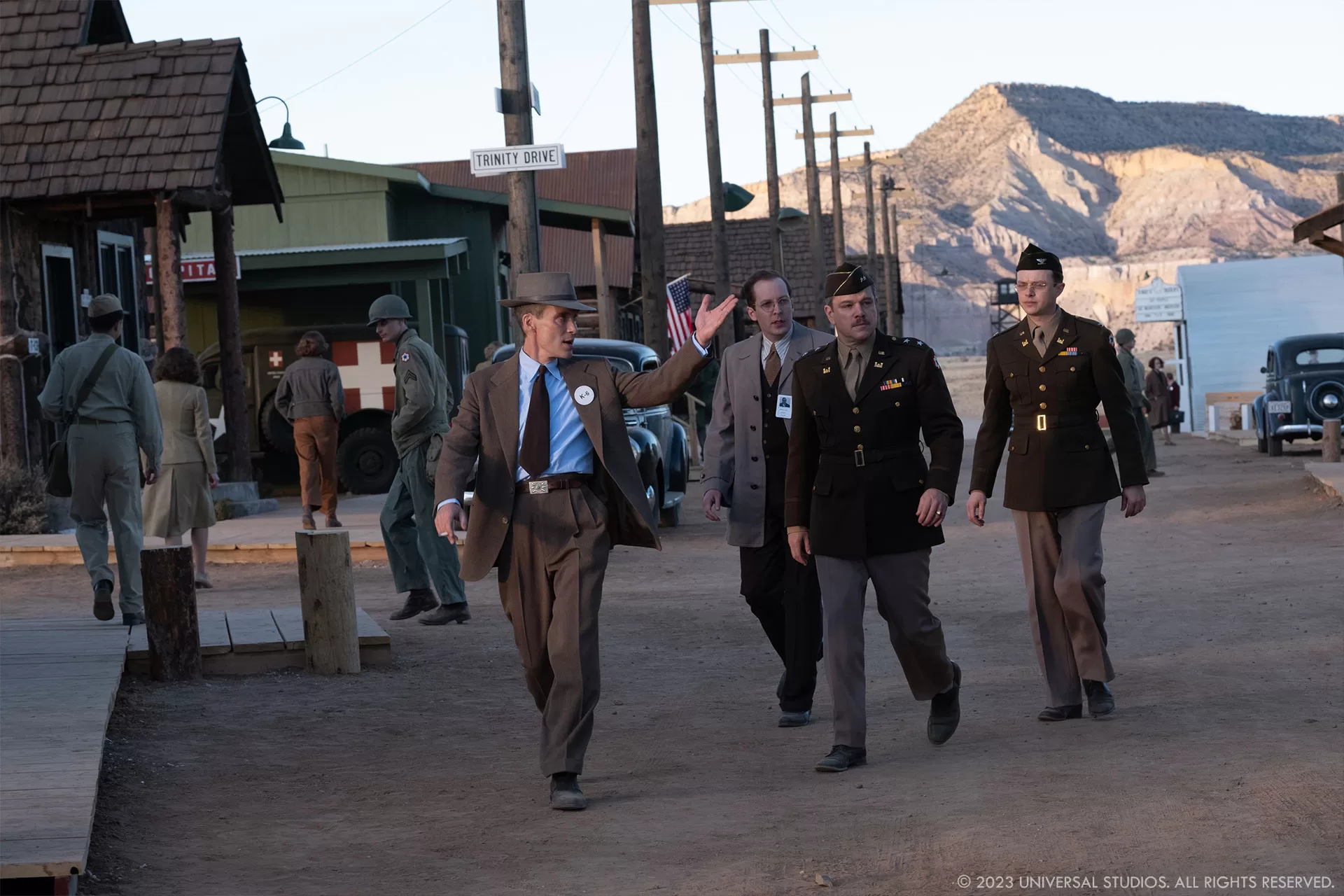
Did you use miniatures effects?
GM: Yes, we used miniatures for the missile rockets taking off but also for the earth from space, stars, black holes, and many more.
Did you want to reveal any other invisible effects?
GM: An interesting point to note is that a substantial number of shots that appear to be post-production creations were, in fact, captured in-camera. One noteworthy example is a series of moments where the background image behind Oppenheimer appears to vibrate. This effect was accomplished through a practical re-projection of the identical set, enhanced by an additional treatment applied using After Effects.
Which sequence or shot was the most challenging?
AJ: The two biggest challenges were also the most rewarding aspects of working on this movie. Firstly, the script describes thoughts and ideas rather than specific visual images. This was both exciting and challenging as we searched for solutions we could build and shoot that were both inspired by the ideas in the story and were visually engaging. The second challenge was the set of creative rules that we imposed on the project. This process of constraining the creative process forces you to dig deeper to find solutions that are often more interesting than if there were no limits.
GM: The Trinity test was probably the sequence that presented the most significant challenges. However, as the show was constantly evolving, we found each shot presented its own set of challenges.
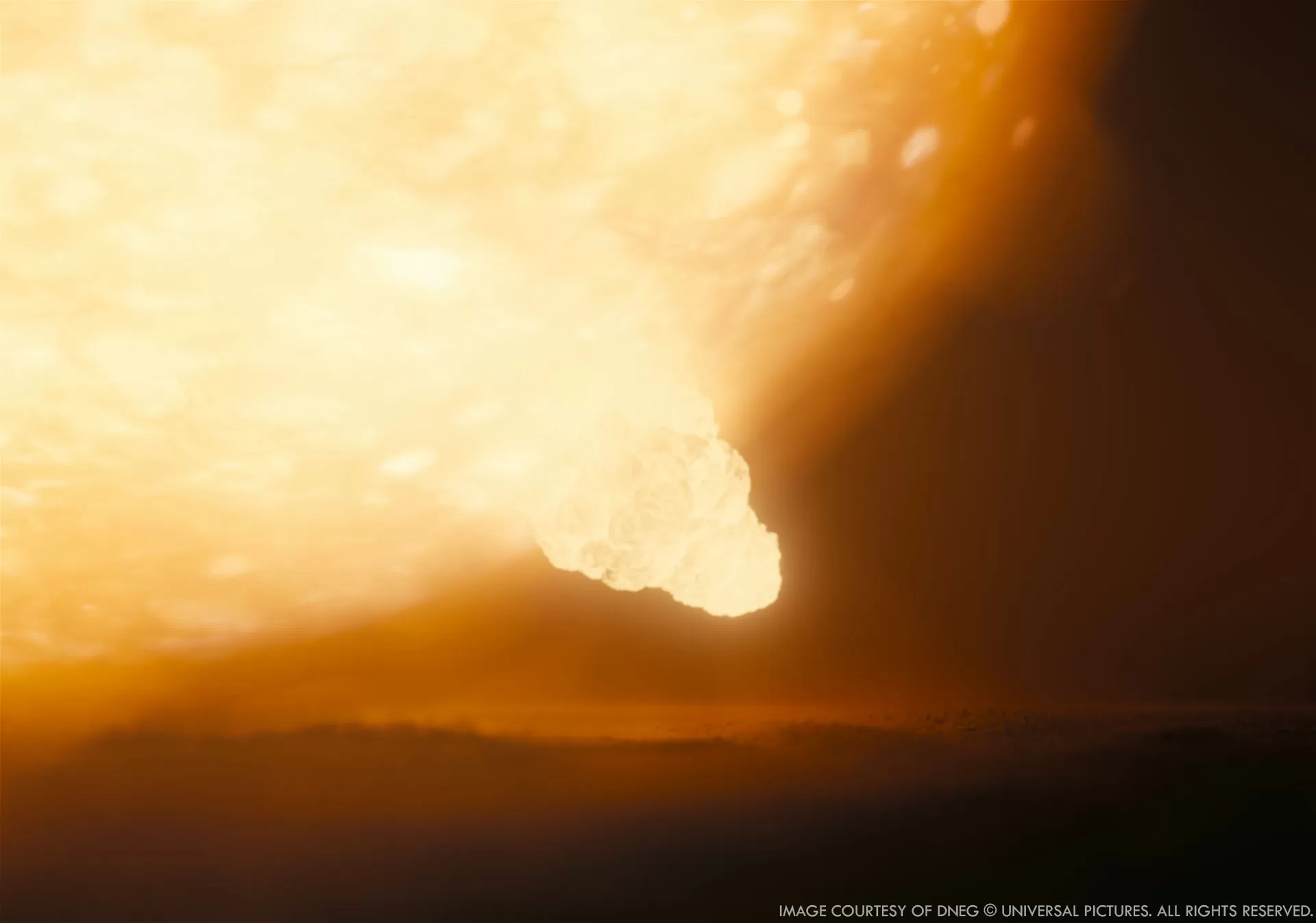
What is your favourite shot or sequence?
GM: The ‘birth of the star’ and the close up of the Trinity test where we see the ‘wall of fire’. Both beautiful pictures designed by Ashley Mohabir and Peter Howlet.
What is your best memory on this show?
GM: Definitely the time spent with the team. It has been an incredibly fascinating journey, and I loved working with a group of very creative and talented artists. Additionally, a great contribution to the show was made by the production team and the DNEG VFX Producer, Mike Duffy, who steadily and joyfully kept the entire project together.
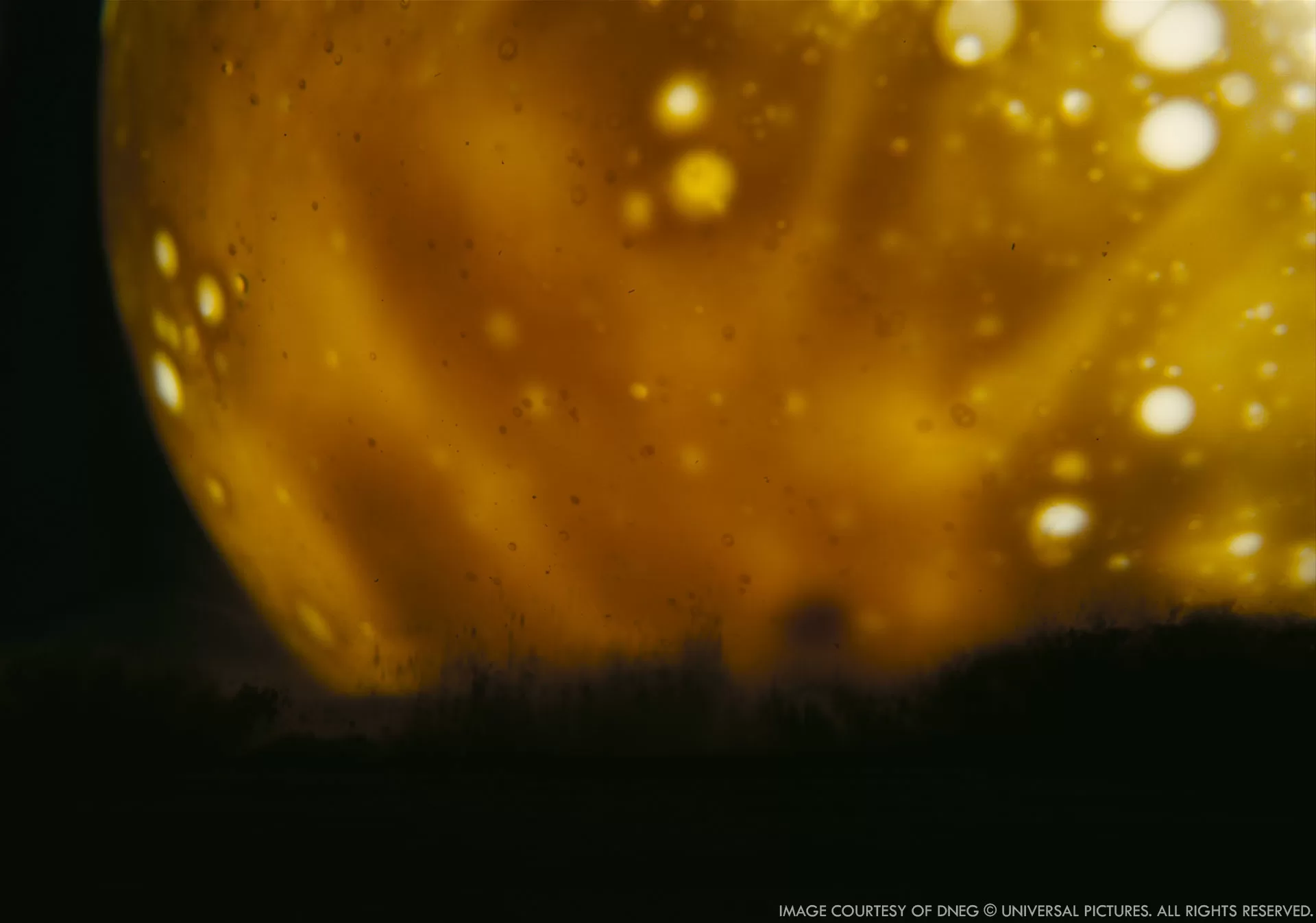
How long did you work on this show?
GM: Around 10 months from the early tests to the final delivery.
What’s the VFX shots count?
AJ: The combined effects departments created over 200 shots, but only half of those needed post work in VFX.
What is your next project?
GM: There’s something really exciting in the works, but unfortunately, I’m not allowed to reveal it just yet.
What are the four movies that gave you the passion for cinema?
GM: A hard choice, but if I have to pick four: The 400 Blows, Three Colors: Blue, Stalker and Interstellar.
A big thanks for your time.
WANT TO KNOW MORE?
DNEG: Dedicated page about Oppenheimer on DNEG website.
© Vincent Frei – The Art of VFX – 2023






